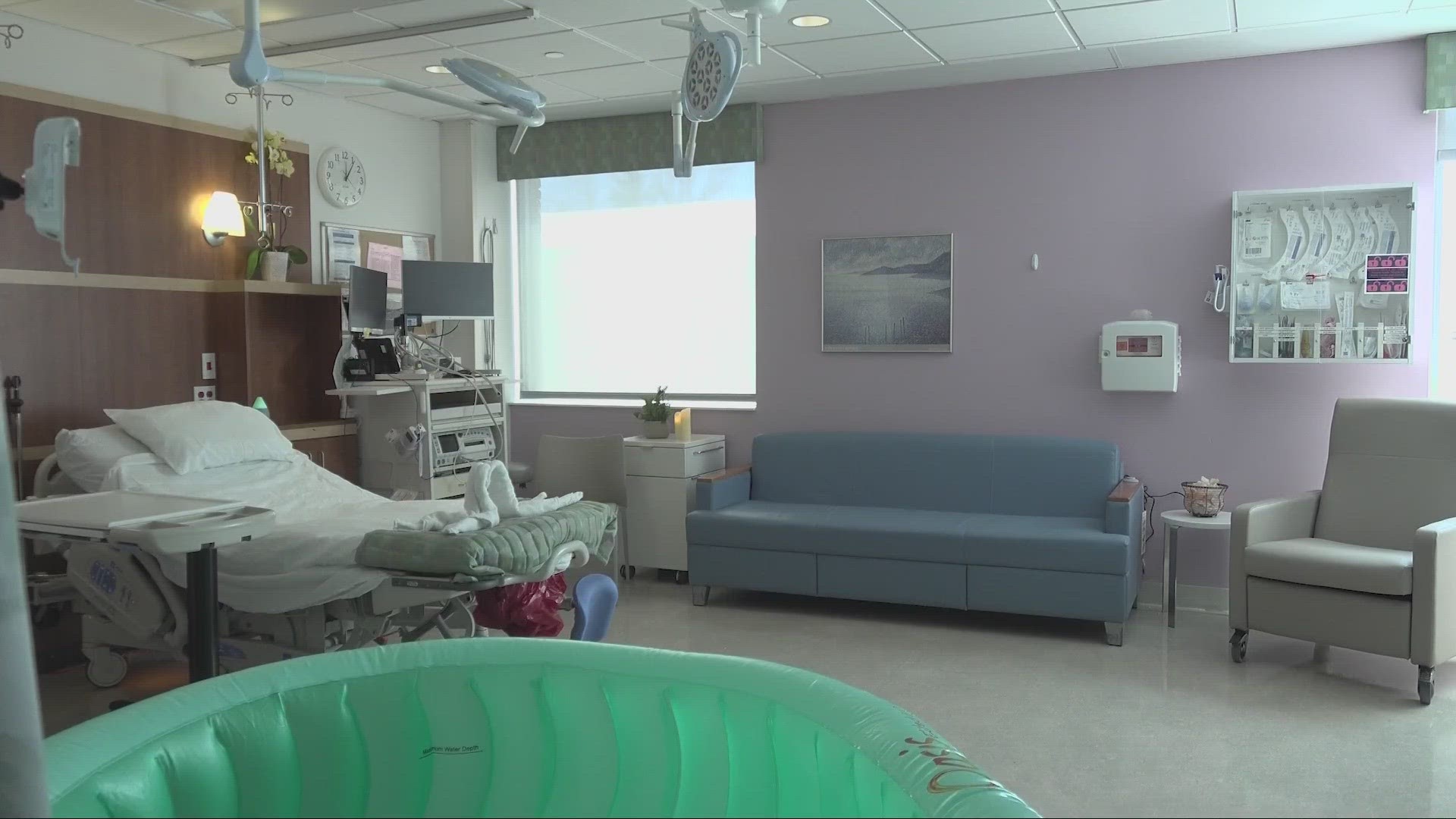MAYFIELD HEIGHTS, Ohio — It feels more like a vacation hotel room than a hospital. The swans, candles, flowers, even a pink wall. Something very rare in a Cleveland Clinic hospital where the walls are traditionally a sterile white color.
“I know that sounds funny, but at the Cleveland Clinic, if you'll look at most hospital rooms, they're all white. We got special permission to paint one wall in on all of our low intervention birth suites the pink color,” says Niki Pearce, a certified nurse midwife at Cleveland Clinic Hillcrest Hospital.
“It adds warmth, it adds a feeling of coziness, of comfort. It doesn't look as sterile,” adds Jennifer Eaton, DO, chair of Obstetrics and Gynecology at Hillcrest Hospital.
Hillcrest now has four low-intervention birthing suites targeted to low-risk women looking for a natural experience. One of a dozen certified nurse midwives handles the deliveries, without all the medical extras.
“Hospitals scare a lot of people, and it would be great if everybody can deliver at home, but they can't. What we have here is different. It’s nice, because we have the best of both worlds. We have this low intervention area space, but we also have highly skilled physicians that are right there at our beck and call if something happens,” says Sherisse Johnston, certified nurse midwife at Hillcrest.
The pandemic caused home births to jump 20%, with another 13% increase in 2021. Those who wanted the hospital buffer found it elsewhere.
“We looked at the demographics of where our patients are going for this kind of care and became aware that we had about 300 patients that had east side zip codes and actually were patients of our midwives on the east side who were choosing to deliver at the birth center at Fairview. So we wanted to create this kind of option here at Hillcrest so that people didn't have to travel,” Dr. Eaton said.
The extra-large rooms include tubs for stress and pain relief. And if the patient already has a midwife, she can assist, but only the staff certified nurse midwives can do the delivery. While many would love to deliver at home, having the safety net down the hall adds to the comfort.
“When I'm asked to come in and help care for or consult with one of the patients of the midwives, you're getting two of us now. So you continue to get that level of midwifery service and care that you want. But I'm here to help watch some of the other things that don’t distract from that,” Dr. Eaton said.
Niki Pearce has been a certified nurse midwife (CNM) for thirty years. She’s one of twelve CNMs working at Hillcrest. She explains the different types of midwives.
“A lay midwife is some someone who decides that they can deliver babies and will start at a grassroots level and hang out a shingle and tell women that they're delivering babies. Then, there are certified midwives who have gone through schooling and have passed a certification exam that's given through the certifying body of the American College of Nurse Midwives. Then, there are certified nurse midwives who are nurses who have gone back to school to become certified in midwifery,” Pearce said.
While many women seek out the care of a midwife for a potential home birth, Pearce says there are some questions to be asked.
“The first question is, 'what is your certification and who backs you up?' Lay midwives may not have a physician to back them up. Even certified nurse midwives who deliver at home have a physician who is available to them for consultation. So that would be one of the things that I would ask. Or if they're planning on hospital delivery, ask how does your practice work? Is it group practice or are you going to be the one who's delivering my baby? Is there anesthesia and a physician onsite?” Pearce said.

